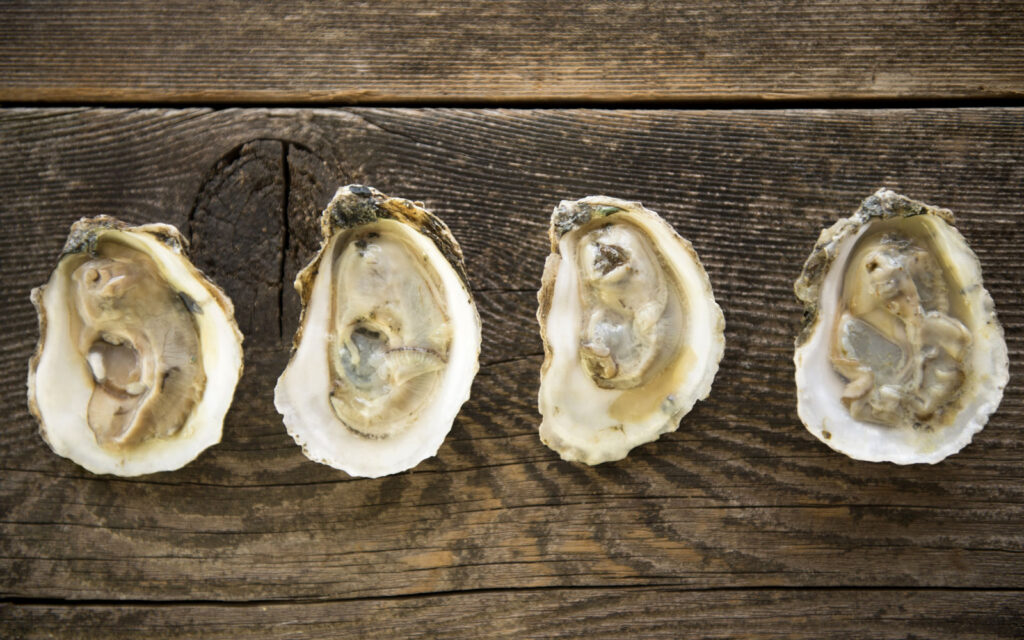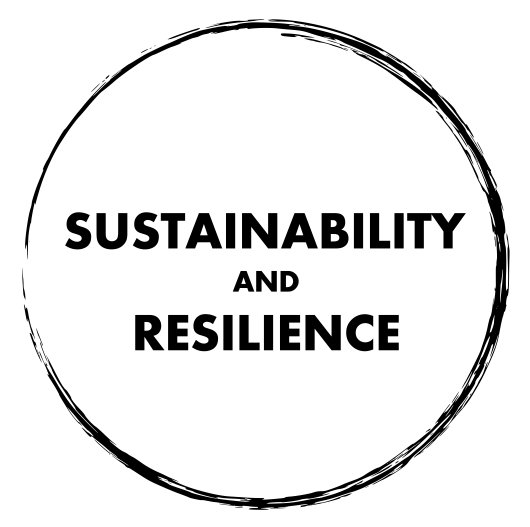
By Kate Cheney and Brian Perkins
Chesapeake Chesapeake Bay has always been known for its abundance of the iconic bivalve, the Atlantic Oyster. However, over the last two centuries, Chesapeake Bay has lost 99% of its oysters. Today, the 1% that remains stands as a symbol of hope. This story will show how collaboration across industries and jurisdictions can change the outlook of a precious dwindling resource.
Oyster Reefs and Ecosystems
ChesapeMost of the oysters you see are farmed in aquaculture because worldwide, oyster reefs have declined by more than 90%. As one of the only places left on Earth where oysters can be found in the wild, Chesapeake Bay’s native Atlantic Oysters are still holding on. Oysters have been harvested here by humans for thousands of years. Before the 19th century, the oysters were so plentiful, people harvested by simply wading into the water to pick them off rocks. The Chesapeake Bay watershed was historically managed by native Algonquian-speaking people who included over 15 tribes, 9 of which were united as Powhatans. Now known as the largest estuary in the U.S., the Chesapeake Bay watershed spans six states and incudes multiple cities. Over 150 rivers feed into the bay from a drainage basin that is over 64 thousand square miles.
Chesapeake Bay has always been a place of rich culture and natural resource. After explorers made contact in 1607, the value and abundance of the areas oyster resources were realized, and colonial resource exploitation soon took place. By the turn of the 20thcentury, year 1900, oyster overharvesting was at brutally high levels. Over 1 billion oysters a year were dredged from the bay floor. There was even a brief but violent “Oyster War” that was fought by the state of Virginia against dredgers that disregarded the harvesting laws. This war and the rapid expansion of the oyster industry brought new legislation aimed at protecting the oysters and commonwealth’s underwater resources. Laws on dredging practices were very basic at first, but over time these laws would become critical to the oyster’s survival.
Habitat, Filtration, Food, & Industry
Dredging left the oysters with little ability to repopulate. Oysters stick together with a cement like bond. Over the generations the oysters grow larger and create what is known as an oyster reef. Much like coral reefs, these oyster reefs provide dense structures that create habitat for other oysters and many other ocean creatures. Dredges drag large nets that scoop the seafloor. Dredging, along with overharvesting, greatly diminished the oyster reefs.
Then, in the 1950’s, further devastation struck with the introduction of new diseases. These were fast-spreading parasite and bacterial outbreaks that caused massive die offs. Harvesters were said to have lost another half of their haul from these diseases. Overharvesting and diseases were soon met with a third sad and compounding factor. Murky, gross water.
Oysters clean water by filtration. They are filter feeders and naturally filter algae, sediment, and chemical contaminants from the water. Oyster die offs meant unfiltered water. And murky water negatively impacted the areas ecosystem health, as well as the local economy that depended on that ecosystem. For example, waterfowl hunters and fishermen we also concerned about the oyster decline because they too had diminishing harvests.
Oysters are keystone species, and the entire ecosystem depends on them. Farmers, miles inland had grown to depend on these oysters for massive amounts of filtration needed to clean the polluted water that ran off farms and emptied into the bay. They needed the oysters to filter their wastewater, but the oyster population had been greatly reduced and could no longer keep the waters clean.
During this time, technology advancements in the agricultural industry changed the way farmers fertilized, tilled, and managed pest control. Runoff from these farms was full of sediment, chemicals, and nutrients such as nitrogen and phosphorous that made large ‘dead zones’ or ‘death clouds’ in the Bay. These ‘dead zones’ were found in brackish waters, where the nutrient dense runoff caused rapid blooms of life near shore. Organisms in the water died from eutrophication, leaving a hypoxic or ‘no oxygen zone’.
Just one dead zone could suffocate an entire oyster reef and school of fish at a time. To make matters worse, oysters’ main habitat in the bay were these same brackish waters, where the dead zones were. It’s brutal to think of the devastation to such a vibrant area. Unfortunately, after these oyster die-offs, invasive species now had an easier time establishing in the newly available space. The rapid distribution of species like the zebra clam brought on another severe decline in oyster population and harvest rates hit all-time lows. By the turn of the 21st century, wild oyster populations would drop to less 1% of levels historically known.
Resilience through the Oyster Roundtable
The subsequent cascade of problems following overharvesting, reef destruction, pollution, disease, and invasive species impacted livelihoods of all people in the area. The oyster ‘fallout’ or ‘oyster-pocolypse’ effected the entire economy built by oyster harvesting. To stop the oyster decline, in 1993, an Oyster Roundtable was formed, comprised of leaders from around the community. They created an Action Plan for Oyster Recovery that was a catalyst for change.
Being the largest polluter in the bay, the agricultural industry made many changes to practices. Oyster-friendly changes were made across agriculture. To reduce the run-off pollution, farms started to used conservation tilling, updated to more efficient irrigation methods, and utilized fertilizer management plans. Streamside fencing was installed to keep livestock and there waste away from the stream edges and absorbent forest buffers were planted alongside streams to reduce polluted run-off further.
Aquaculture farms growing oysters in the bay also increased, cleaning the water, and increasing the yearly oyster harvests. Funding was gathered and dispersed to meet milestones of wild oyster recovery. Postage stamp style Oyster Sanctuaries that spot the bay’s shores were created where oyster harvesting is now completely illegal. These areas became protected from illegal poaching as local law enforcement were authorized to patrol for and prosecute poachers. Sanctuaries were and remain critical to the recovery of the oysters because of the need for the formation of oyster reefs.
Thriving oysters means reefs of adult populations creating offspring larvae naturally in the bay. Along with oyster repopulation, oyster reefs are critical to the entire ecosystem. To aid the natural formation of oyster reefs, reef restoration began to provide the physical structure that oysters need to thrive. To do this, large, 300 lb., hollow, concrete structures called “reef balls” are used to create artificial reefs and deter poaching by blocking dredges. These structures remind me of whiffle balls and look impressive when they are covered in adult oysters.
Along with restoring the reef structure, people are also oyster seeding. This is known as ‘spat on shell’ and is where used oyster shells are seeded with larvae in a tank, then are released back into the environment. Instead of chipping and selling used shells, groups get shells from restaurants, businesses, and manufacturers to seed with larvae and release. The Oyster Recovery Partnership promotes that they’ve planted around 8.5 billion juvenile oysters back in the waters.
With the rebound of the oyster, Chesapeake Bay also saw a rebound of clear waters, sea grass, shrimp, fish, crabs, birds, and other wildlife. Many other organisms depend on oysters, for habitat, filtration, and as part of the food chain. Oyster recovery meant seafood industry recovery, too. The oysters brought life with them when their habitat was restored.
The subsequent environmental improvements led to a more developed oyster economy which also enriched the lives of the millions of residents living near the bay. It is estimated that the oyster restoration efforts have produced more than 22 Billion dollars annually. Harvests of wild and aquaculture oysters are stable and continue to steadily increase over time.
Saving the oysters took efforts from the entire community, from large institutions down to countless individuals, across huge geographic area. Over the following decades, collaborative efforts have to include diverse groups of stakeholders that all cooperated with each other across industries, and jurisdictions. Now, at the Roundtable, there are leaders from business, fishery management, agriculture, conservation groups, local, state and national government, non-profits, research facilities, educational institutions, health care facilities, and citizen groups.
Today the bay is a model of collaboration of society, showing the world how resilient humanity and the environment can be. This is a heartbreaking story; however, scientists believe that by working together we can reach a tipping point where recovery efforts will increase exponentially, rapidly outpacing limiting factors.
What Can You Do to Help the Chesapeake Bay Oysters?
You can eat oysters and support oyster aquaculture farms!
You can consider recycling oyster shell so it can be used to build new reefs. You can find local oyster recycling programs online.
You can volunteer with the CBF’s active oyster restoration program by building reef balls and cleaning shells.
You can become an oyster gardener! Anyone with access to the water can also raise oyster larvae at home, through programs like Maryland Grows Oysters or the Chesapeake Bay Foundation.
Spread the word to your neighbors and friends about how important oysters are to the health of the waters and wildlife of the Bay.
Communicate with your members of Congress, Senators, and local government that clean water is important to you and urge them to support clean water legislation that limits pollution and funds oyster recovery.
Reduce pollution from your home, back yard, school, or business. The most effective pollution reduction that would be reducing runoff that has fertilizers, pesticides, or sediment.
Sources
The Maryland Department of Natural Resources
The University of Maryland’s Center for Environmental Science
